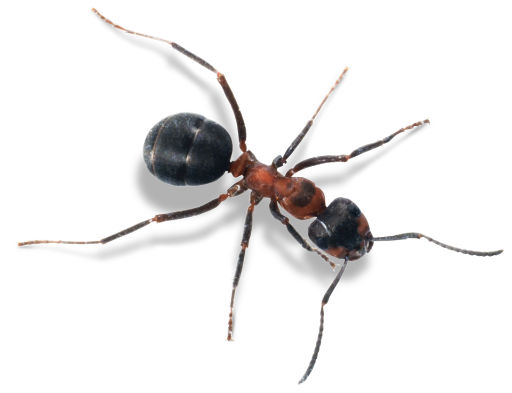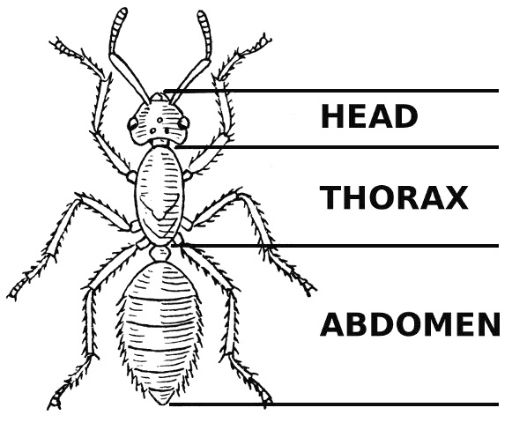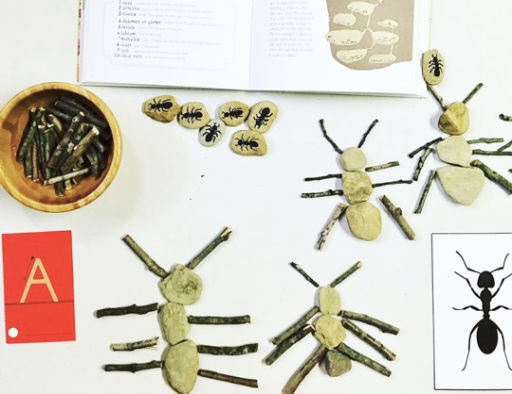Children will: Compose pictures from shapes and loose parts
Children will: Practice counting and recognizing sums of groups
Children will: Develop an understanding of the characteristics of an insect
Adults will: Support math skills by asking questions and encouraging math talk
Spring is a wonderful time to discuss animals and to go outside to observe the animals in your community. One of the simplest ways to do this is to go on an insect hunt. They can easily be found in local parks and backyards, and learning about them is a great way to incorporate science and math ideas into play.
First, identify some insects, either by going outside and finding them, or using this link to watch a video showing some insects up close. Discuss what you observed. What shapes did you notice in the parts of the insects? How many body parts did you count? How big or small were the insects?
Next, discuss the characteristics of an insect. All insects have a specific body type, shown in the table and pictures below:
Insects have…
- 6 legs
- 2 antennae
- 3 main body parts: a head, a thorax and an abdomen



Now, build your own insects from pattern blocks or loose parts. As you build, recall some of the features you observed and build your insects to reflect what you learned. Identify the shapes you used in your insect and count the parts. Does your insect have all the characteristics listed above?
Use math talk to discuss your creation. Ask questions such as:

- How many of each shape can you count within your insect? How many circles? Rectangles? Triangles?
- How many pieces did you use in total?
Incorporate some of the science vocabulary you learned about insects:
- What shape did you choose for the head? Thorax? Abdomen?
- How many legs should your insect have? How many antennae?
Literacy Extensions
- For a more scientific look at insects, read Bugs are Insects by Anne Rockwell.
- For a wonderful story on bees and what it means to be a beekeeper, read The Beeman by Laurie Krebs.
Fun Insect Fact!
One insect, the Brood X Cicada, grows in a very interesting way. Adults lay eggs in the ground, and those eggs remain buried for 17 years before crawling out of the ground as full-grown insects. 2021 is a Brood X Cicada year, and scientists say that about one billion cicadas will emerge from the ground in the United States this May! Check out the full story of the cicada here!